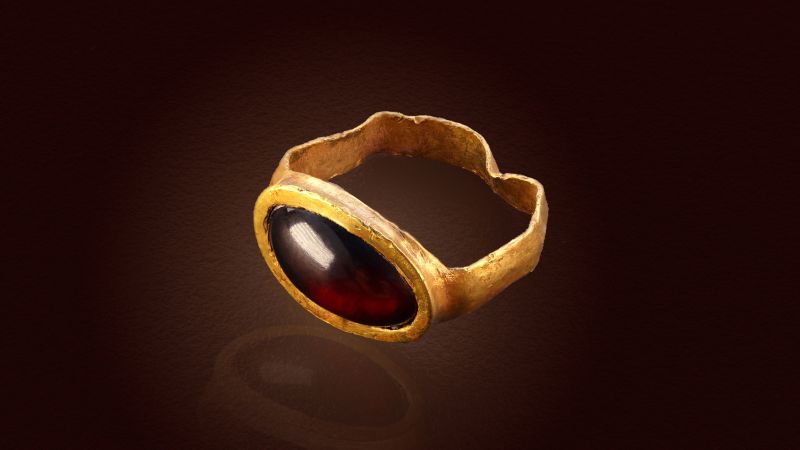In a remarkable archaeological discovery, researchers in Jerusalem have revealed a gold ring dating back approximately 2,300 years. The ring features a striking red gemstone and is notably similar to another gold ring that was uncovered less than a year ago. Both artifacts were discovered at the City of David site within the Jerusalem Walls National Park, a location rich with history and cultural significance.
The significance of these rings is further deepened by their potential connection to Hellenistic practices. Archaeologists suggest that the two rings, both small enough to fit a child’s finger, may be linked to a coming-of-age ritual for young women preparing for marriage. This hypothesis indicates that the items were likely buried intentionally, possibly as part of a custom where betrothed women would inter childhood objects and jewelry in the foundations of their homes to symbolize their transition into adulthood.
The items, along with other jewelry including bronze earrings and a decorated gold bead, are believed to date from the Early Hellenistic Period in Jerusalem, a time that spanned from 332 to 141 BC. This era is defined by the expansion of Greek culture and its profound influence across various regions, including Jerusalem. Efrat Bocher, an excavation manager associated with Bar-Ilan University and the Center for the Study of Ancient Jerusalem, remarked on the rarity of such findings. She indicated that the presence of gold jewelry from this period is a testament to the wealth and high standard of living experienced by Jerusalem’s residents.
The recovered jewelry was found within the foundations of a large building, embedded in layers of dirt dated to the late third or early second century BC. Excavation leaders Dr. Yiftah Shalev of the Israel Antiquities Authority, and Yuval Gadot, Professor of Archaeology at Tel Aviv University, described how the finds illuminate a period of Jerusalem’s history that has remained largely obscure due to the scarcity of archaeological evidence. The recent discoveries challenge previous assumptions about the city’s cultural isolation, as they showcase the inhabitants’ openness to adopt Hellenistic influences.
One excavator, Rivka Lengler, described the moment she recognized the ancient ring, initially mistaking it for modern jewelry due to its excellent condition. When she held the ring, she felt a profound connection to the people who lived in Jerusalem thousands of years ago, which demonstrates the personal impact of such archaeological finds. The rings themselves were crafted by artisans who likely hammered thin layers of gold onto the metal bases, demonstrating advanced craftsmanship. Dr. Marion Zindel, another archaeologist from the Israel Antiquities Authority, elaborates on the hypothesis that these rings were intentionally placed in the foundations as part of a ritualistic custom of the time.
The recent findings offer new insights into the Early Hellenistic Period in Jerusalem, a time associated with wealth and urban development. Notably, researchers have been exploring the Givati parking lot area at the City of David, where excavations have provided further understanding of the city’s long and multifaceted heritage. This area was thought to be a small settlement, yet the discoveries of neighborhoods, domestic structures, and administrative buildings signal a much more complex urban environment than previously believed.
As the researchers continue their work, they aim to analyze various artifacts, including animal bones, pottery, and coins, to enhance the understanding of this historical context. The findings may shed light on trade connections, dietary practices, and the social customs of Jerusalem’s ancient residents. Understanding what these artifacts reveal about the community’s values, lifestyle, and affiliations will be instrumental in piecing together the early urban fabric of Jerusalem from the 4th to the 2nd century BCE. The duality of the sacred Temple and the Hellenistic influences presents a compelling narrative for archaeologists and historians looking to unravel the story of Jerusalem during this transformative period.
Through ongoing excavations and analyses, researchers are beginning to uncover the broader implications of these discoveries, providing a more nuanced understanding of Jerusalem’s ancient civilization and its interactions with neighboring cultures. This newfound knowledge not only enhances historical scholarship but also enriches the narrative of Jerusalem as a center of cultural exchange and evolution over centuries.



